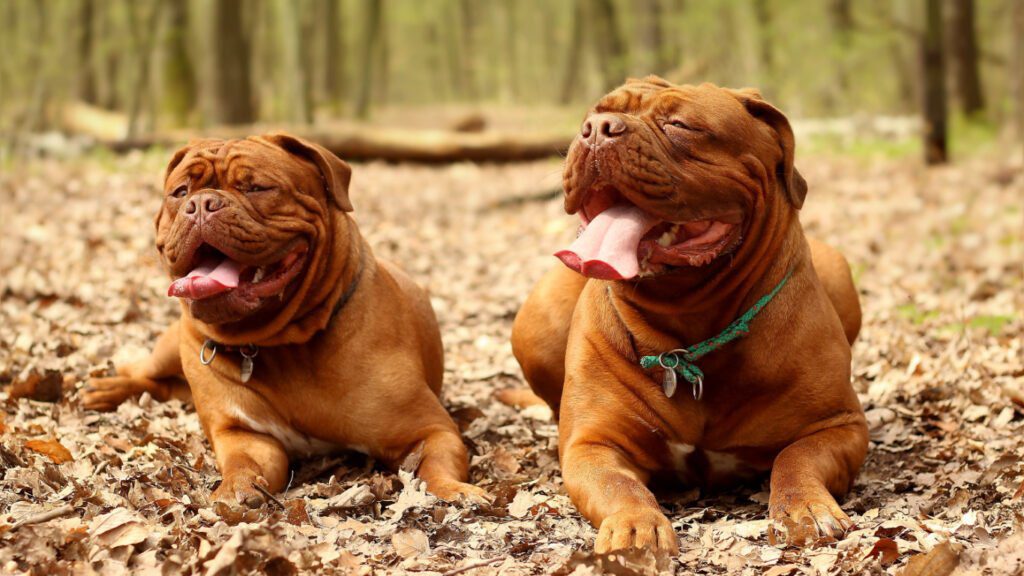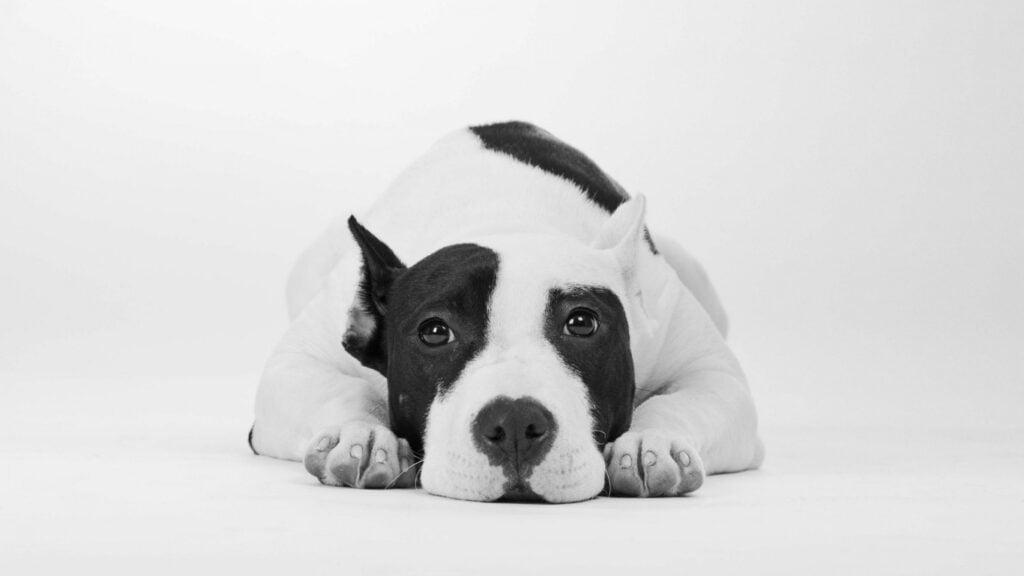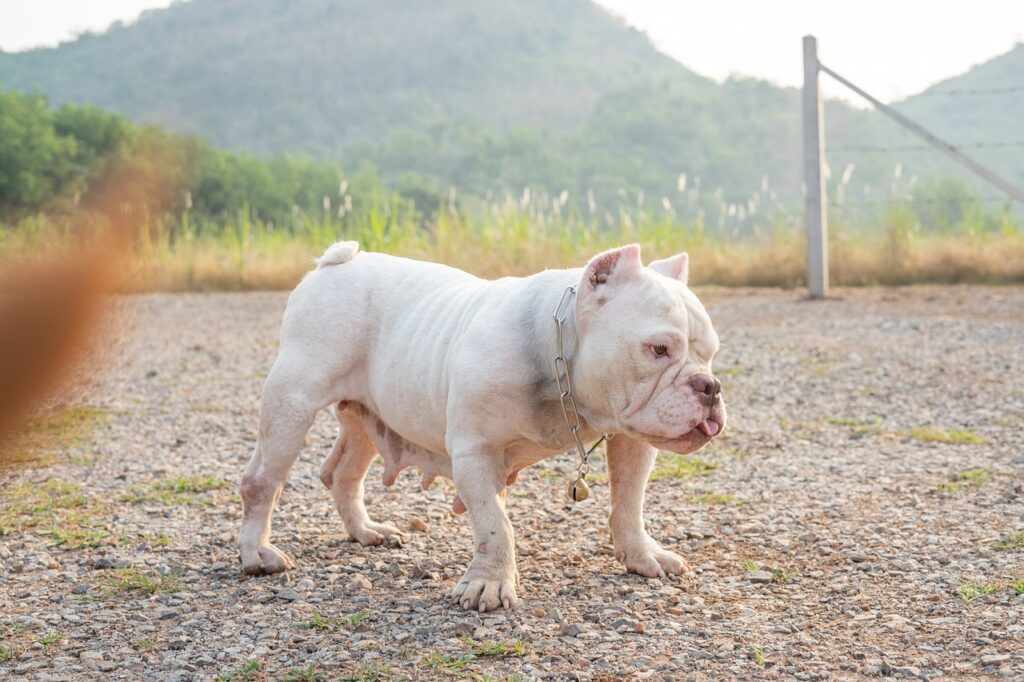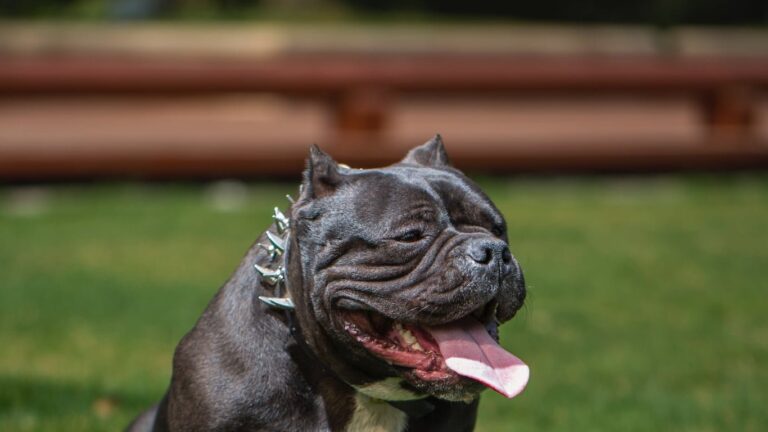If you’re curious about the heat cycle of female American Bullies, it’s probably because you’re wondering when it will end, or you’re thinking about breeding your American Bully dog. As you delve into this article, remember that providing the best care also involves safeguarding your pet’s health through proper insurance coverage. Explore reputable pet insurance options to ensure your American Bully’s well-being.
No matter the reason, you’re eager to gather all the important details to make the right choices. I’ll provide more information about this and answer any questions you have.
Quick Look at Dogs’ Heat Cycle
Starting at around six months old and lasting through their life, female dogs undergo estrus, or heat, approximately every six months. This is when they’re ready for mating.
During this time of heightened sensitivity, it’s essential to provide your American Bully with optimal care, including considering the right pet insurance that covers potential health concerns.
When a female Bully dog is in heat, she’ll present herself to male Bully dogs by lifting her back end and positioning her tail to the side. Smaller Bully breeds might start their heat as early as four months, but typically, it begins around six months of age.
Larger breeds, like giants, might experience their first heat between 18 to 24 months. It’s crucial not to breed young females during their first and second cycles.

During these initial cycles, the eggs still need time to mature, and the dog must grow fully. If you’re considering breeding, your vet can guide you at the right time based on the dog’s readiness.
How Long Do American Bully Females Stay in Heat?
Female American Bullies experience heat approximately every six months; this phase lasts about 2 to 4 weeks. The first heat usually starts around six months and repeats throughout their life, although the time between heats becomes longer as they age. As you plan for your Bully’s well-being, think about comprehensive pet insurance coverage that takes care of her health needs throughout her life.
Billing a Bully during the initial two cycles is not a good idea because they’re still growing and developing.
If a Bully has faced undernourishment, their first heat might be delayed, similar to how kids with poor nutrition might experience delayed puberty. This is why ensuring proper nutrition from a young age is crucial for a Bully that’s intended for breeding.
The timing of a dog’s first heat is also influenced by its size. Smaller dogs might start their heat as early as four months, while larger ones take more time to mature, leading to a later first heat.
Smaller dogs tend to cycle more frequently as adults, sometimes up to three to four times a year, whereas larger dogs might only cycle once a year.

Considering American Bullies are medium-sized dogs, they generally start their heat around six months of age and continue to cycle twice a year during their prime years, gradually slowing down in frequency as they age.
Understanding the Heat Cycle
The heat cycle of an American Bully lasts around two to four weeks, with the peak fertility window being just about five days. This usually falls 10 to 14 days after the first day of heat. Progesterone testing is the reliable method to pinpoint this fertile phase.
You’ll spot signs that your female dog is in heat when her vulva swells, and there’s a reddish discharge. She might also become more restless and show interest in male dogs.
The first day you observe blood marks the start of your dog’s heat cycle. Following that, bleeding continues for the next two to four weeks.
Typically, an American Bully will ovulate a bit over a week into her heat cycle, and her fertile period falls within days 10 to 14. Many female Bullies become most fertile around day 11, but this timing can differ.
Some Bullies have shorter cycles, while others might take weeks to ovulate. After ovulation, the eggs need some time to mature before becoming fertile. Unlike humans, who are fertile as soon as they ovulate, dogs require this development period.
Once your Bully ovulates, she remains fertile and ready to mate for less than a week. If mating doesn’t occur during this time, she will gradually exit her heat cycle and return to normal behaviour.
Differences Among Individual Dogs
The heat cycle’s duration can differ significantly from one dog to another. Certain female dogs might begin their heat cycle at around four months, while others might kick it off closer to eight months.
The dog’s size and age have a major impact on the heat cycle. Smaller dogs generally start their cycle earlier. At times, female dogs can go through their cycle without showing noticeable signs, which might go unnoticed by their owners.
Male dogs react in varying ways. Their responses can be quite diverse. Some become moody, noisy, or even aggressive when there’s a female dog in heat nearby.
Others might not show strong reactions; a few might lose interest in eating, while some might get aggressive. Experienced male dogs usually show interest only when a female dog is in the peak of her heat, known as “standing heat.” Inexperienced males might get excited sooner.

If you anticipate any conflicts or need secure boundaries, it’s best to be prepared. The timing of a female dog’s first heat can be highly variable – it might occur at four or eight months, or there might even be an initial “silent season” that male Bullies notice, but you might not catch onto.
Factors Influencing the Length of the Heat Cycle
The heat cycle’s progression is primarily guided by internal factors, with genetics being the key determinant for an American Bully’s cycle. Since each dog carries a unique genetic makeup, their heat cycle length will naturally vary.
Various dog breeds exhibit distinct intervals between heat cycles. On average, American Bullies typically enter their first heat around six months of age. However, this timing can be influenced by their nutritional status.
If a Bully faces malnutrition, their onset of heat might be delayed. Furthermore, the timing of the initial heat cycle can impact the schedule of subsequent cycles.
The pivotal influencers are the genetic traits inherent in the breed. External factors wield limited sway over a dog’s heat cycle, except for the potential to slightly postpone its occurrence.
Recognizing Signs of Heat in Female American Bullies
When a female American Bully enters her heat cycle, she displays certain telltale signs. Some of these signs are related to her physical state, while others pertain to her behaviour. Occasionally, a dog might go through a “silent season” where signs are less evident.
Physical Transformations
The hormonal shifts during the heat cycle make noticeable changes in your American Bully’s body, indicating her heat status. Physically, you’ll observe a swollen vulva, a discharge of blood, and an increased frequency of urination.
Your Bully might also engage in more licking of her genital area and could exhibit signs of fatigue. These changes signify her body’s preparation for potential mating. The most significant physical transformations happen internally.
Throughout this period, her ovaries mature and develop in readiness for fertilization. Hormone levels surge, rendering the dog more submissive. Her vulva enlarges to accommodate a potential mate, and her breasts may also experience growth.
Changes in Behavior
Besides the physical alterations, a female Bully in heat also undergoes behavioural changes. She might display increased affection and submissiveness towards male dogs during her heat cycle. She could sometimes exhibit a different demeanour, appearing anxious or tired. She might become skittish easily.
The hormonal shifts can occasionally lead to shifts in behaviour for the female American Bully. She might show signs of aggression, barking, or even nipping. However, these behavioural changes are temporary and generally subside.
As a result of these hormonal fluctuations, she enters a phase of heightened receptiveness to male dogs. Her appetite might change too—she might experience a decreased appetite and eat less, or conversely, she could exhibit an increased appetite and eat more than usual.
Frequently Asked Questions (FAQs)
How Often Does a Female American Bully Go Into Heat?
Female American Bullies experience their heat cycle every six months, starting from six months of age and continuing throughout their lives. The frequency of cycles gradually lengthens as they age.
At What Age Do American Bullies Go Into Heat?
American Bullies typically have their first heat at six months of age. However, if a female faces malnutrition, her initial heat cycle might be delayed.
How Can You Tell When the Dog’s Heat Cycle Ends?
The heat cycle concludes when the vulva returns to its regular size and there’s no more bleeding. Since a heat cycle lasts 2 to 4 weeks, you can expect it to finish within that timeframe.
What Are the Four Stages of a Dog in Heat?
A dog’s heat cycle comprises four stages:
- Proestrus Stage: The initial stage, proestrus, is signalled by the vulva enlarging, marking the beginning of the heat cycle.
- Estrus Stage: During this stage, the ovaries release eggs for potential fertilization. The female becomes receptive to male dogs.
- Diestrus Stage: This stage marks the end of the fertile period. If the dog is pregnant, this is when puppies are born. Diestrus lasts around 60 to 90 days during pregnancy.
- Anestrus Stage is the resting phase, with no fertility activity for 100-150 days. It’s the gap between two heat cycles.
Will My Dog Bleed for Three Weeks?
Female dogs usually experience bleeding for approximately 2 to 4 weeks during their heat cycle. This bleeding signifies that she is in heat, and the cycle concludes once the bleeding ceases.
Wrap-Up
While the heat cycle spans around four weeks, the window for fertilization is about five days. This brief timeframe offers the opportunity for successful breeding and a potential litter. However, if breeding isn’t your plan, you can separate the female and give her attentive care.
She might become a bit irritable during this period, but that’s perfectly natural. It’s a biological process that she undergoes. Offer her additional care and consider using warm towels to ensure her comfort. This phase is delicate in a Bully’s life, demanding special attention.
Whether you proceed with breeding or not, her well-being remains paramount. It’s crucial to prioritize her health and exercise responsible ownership. Timely visits to the vet for regular check-ups are essential to prevent complications. Make sure all necessary tests and screenings are carried out. Your commitment ensures the best for both your furry friend and you.


